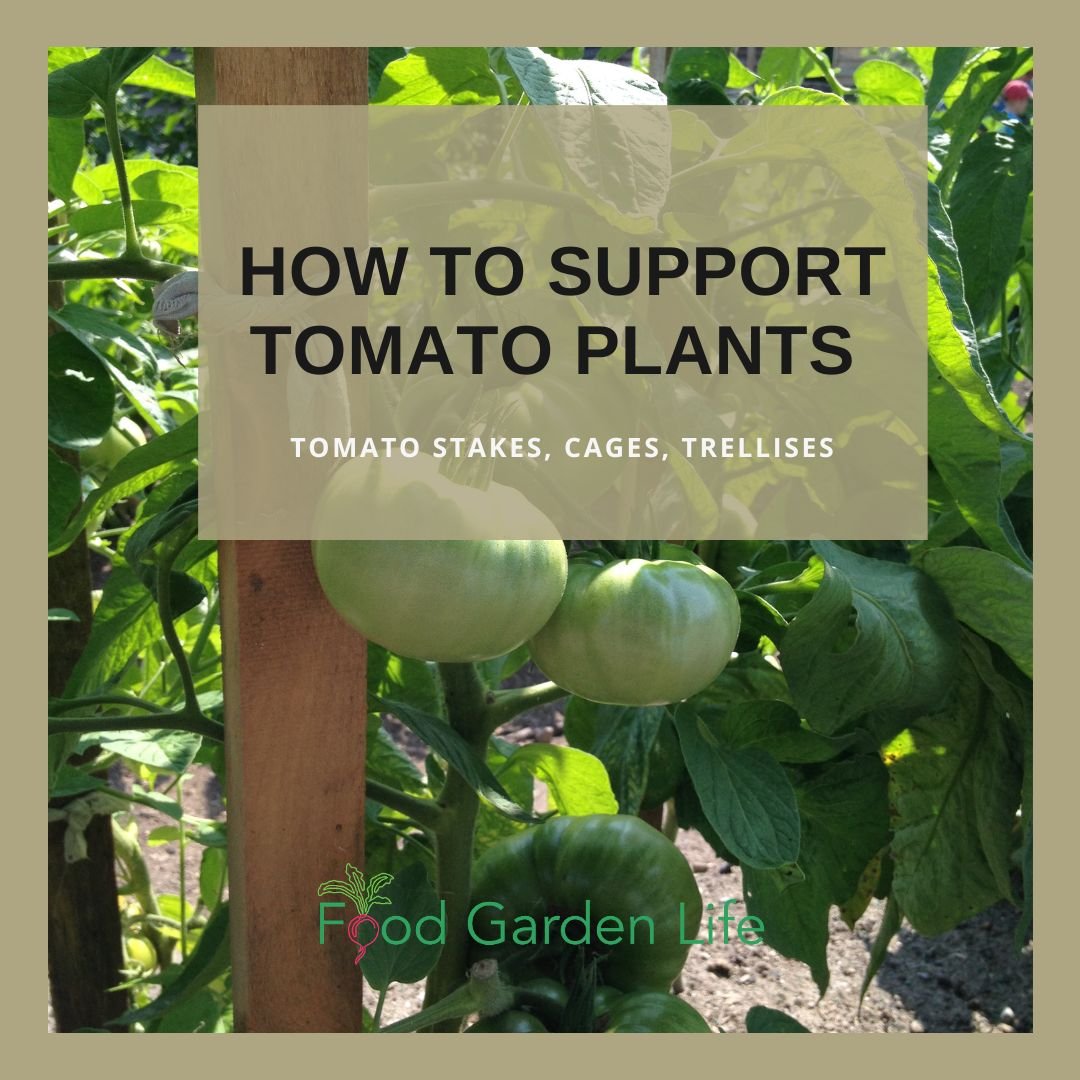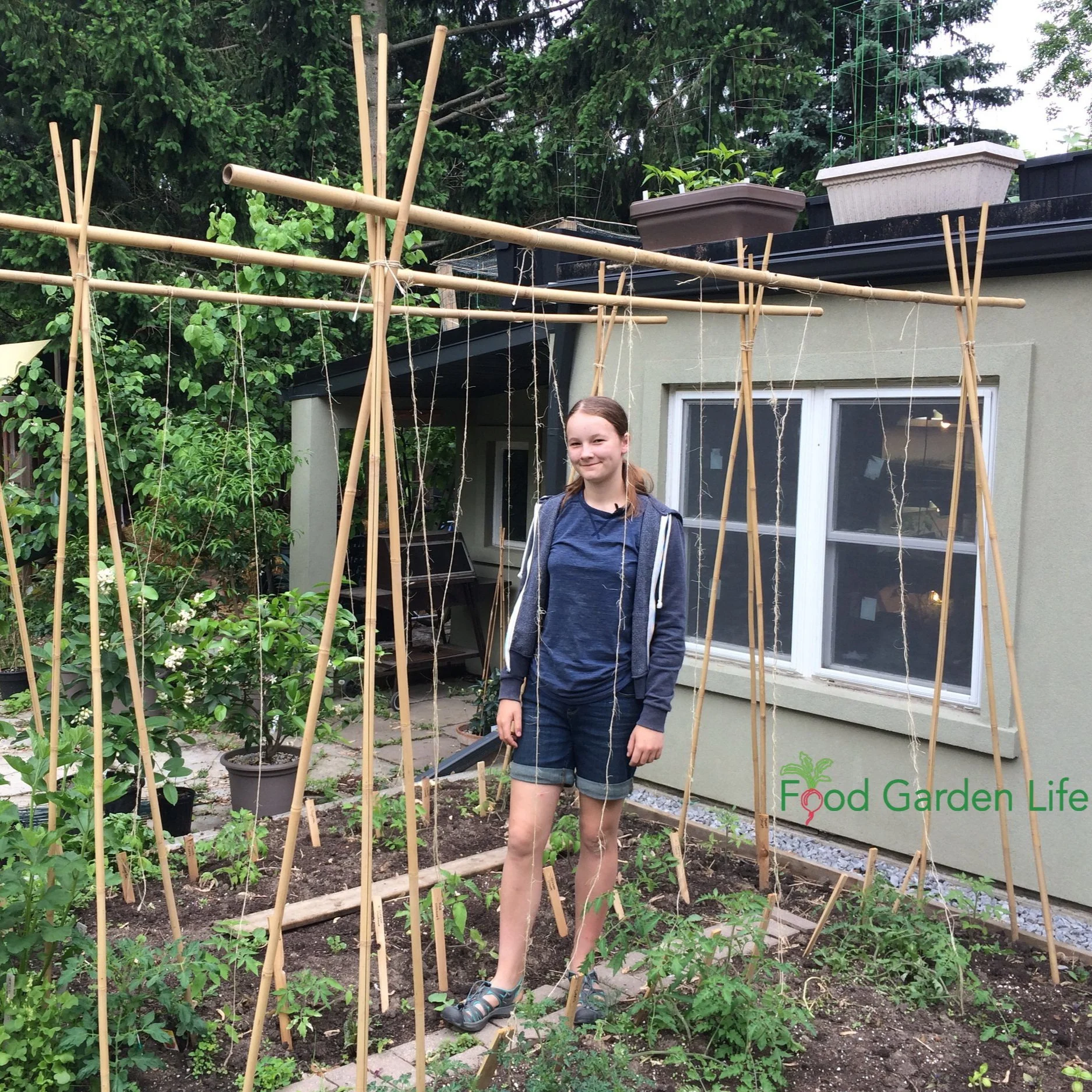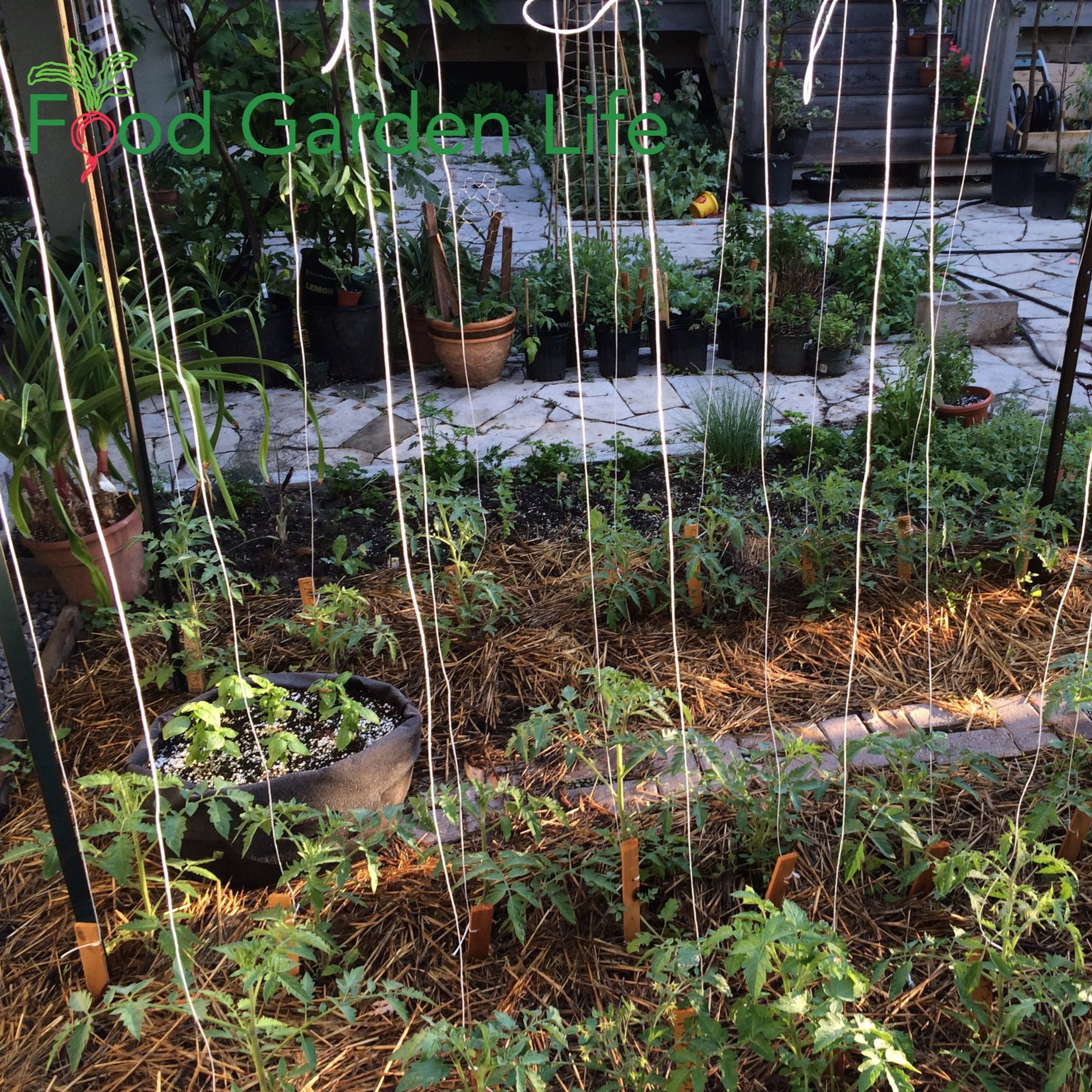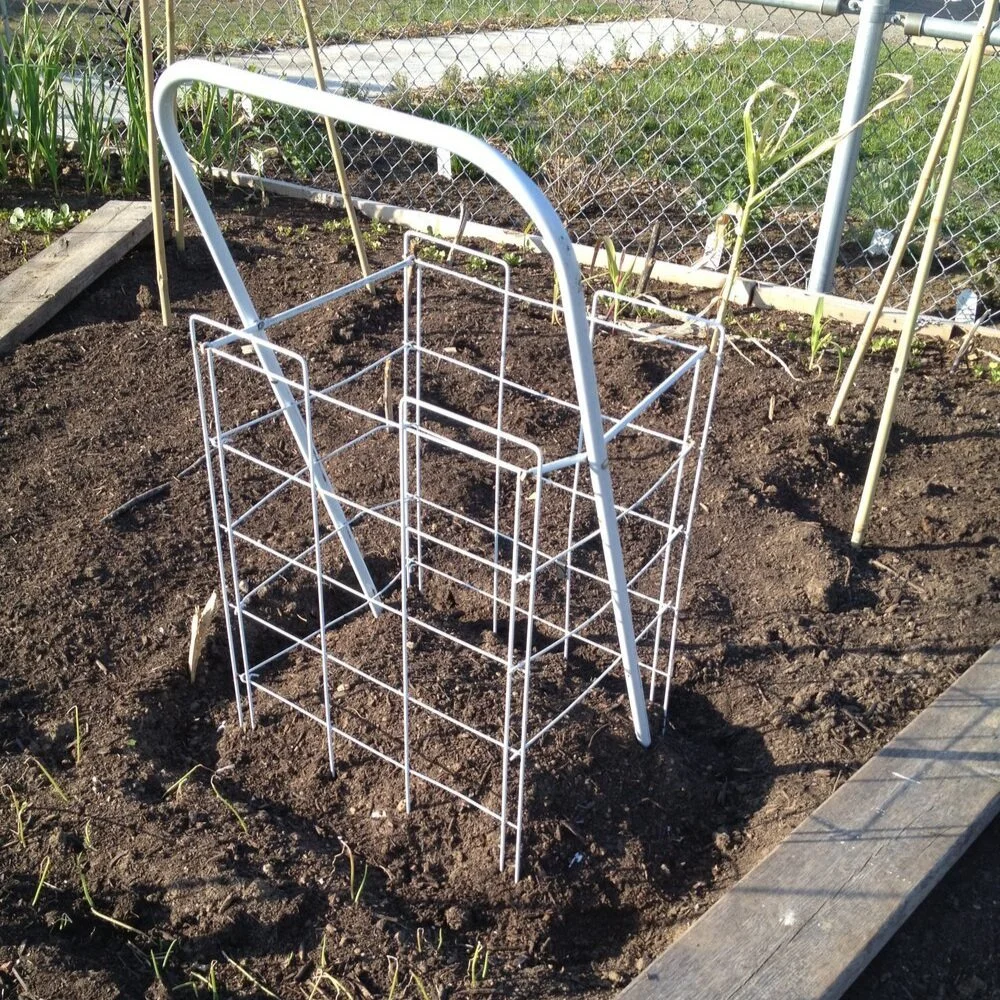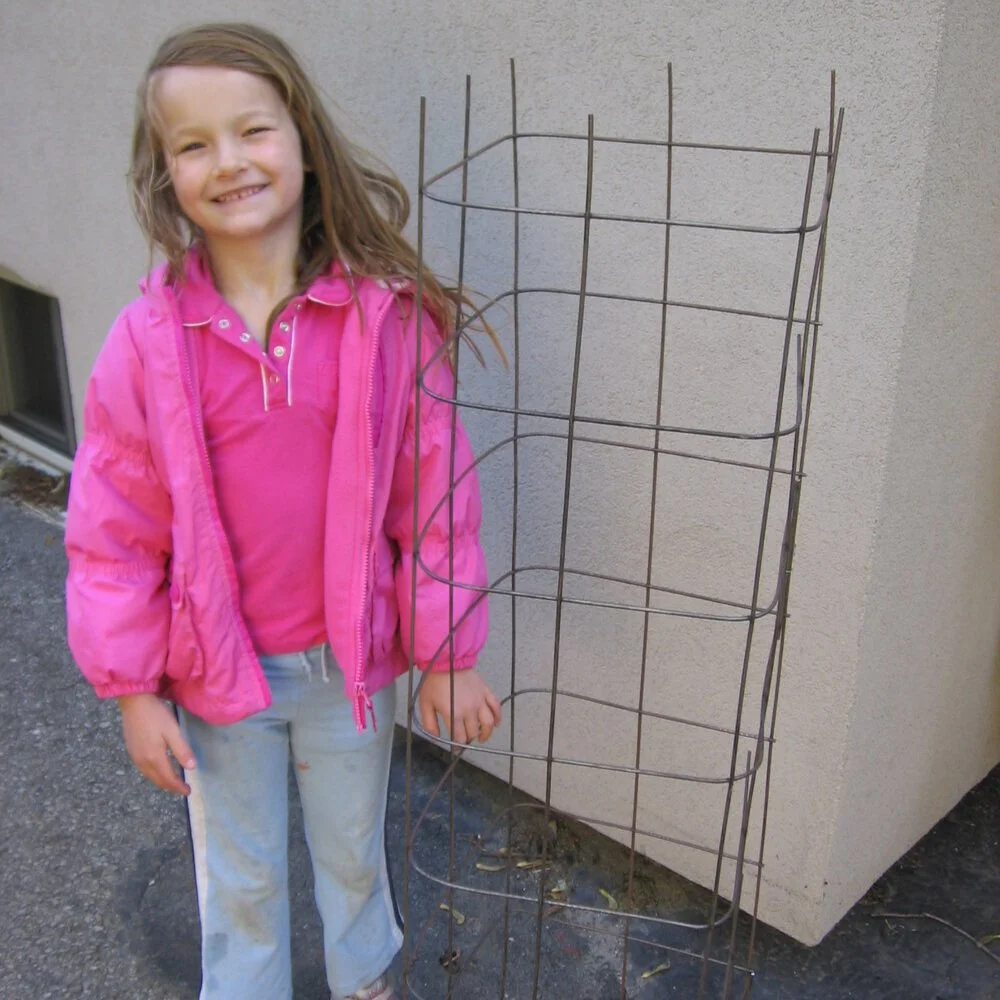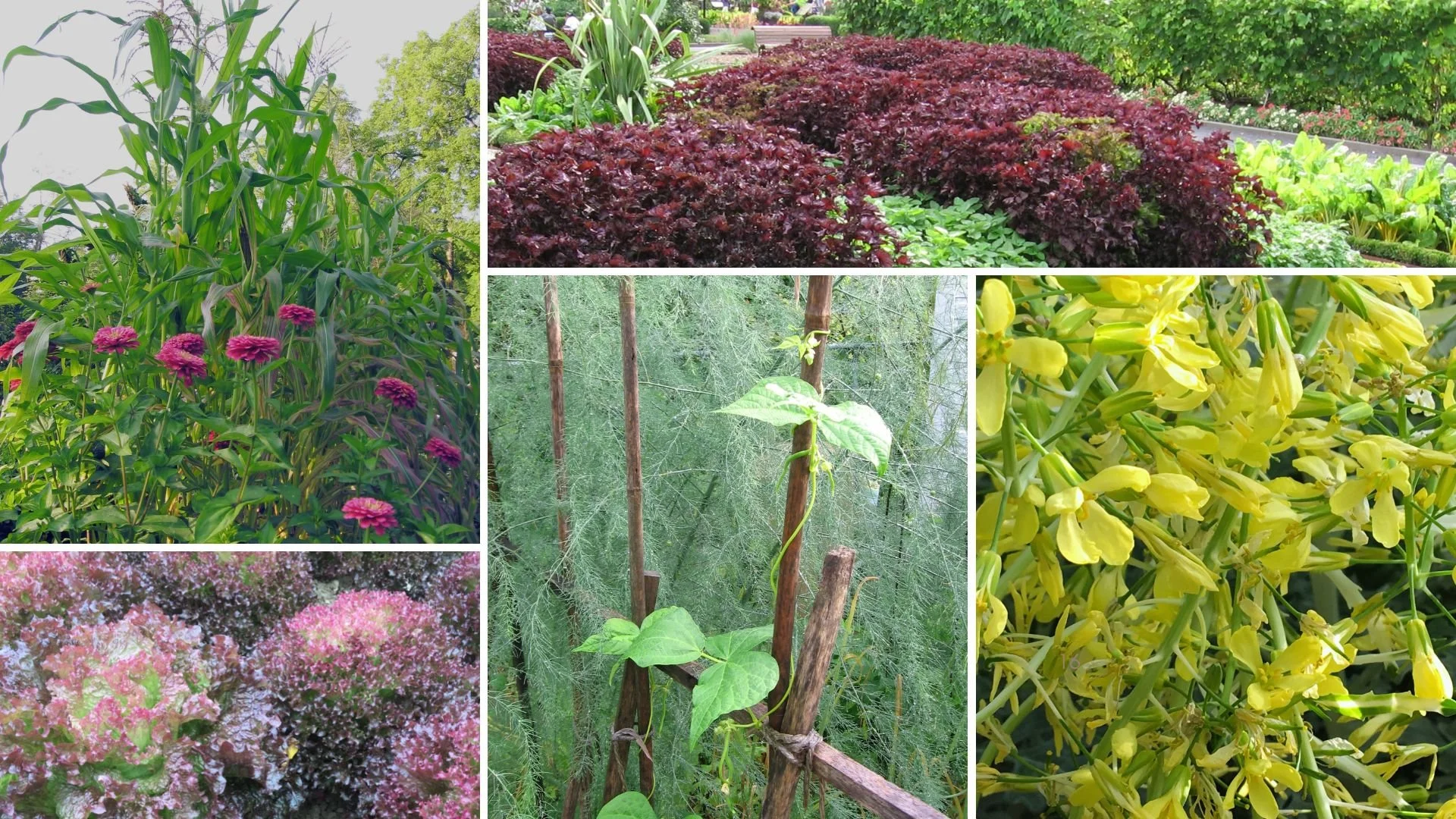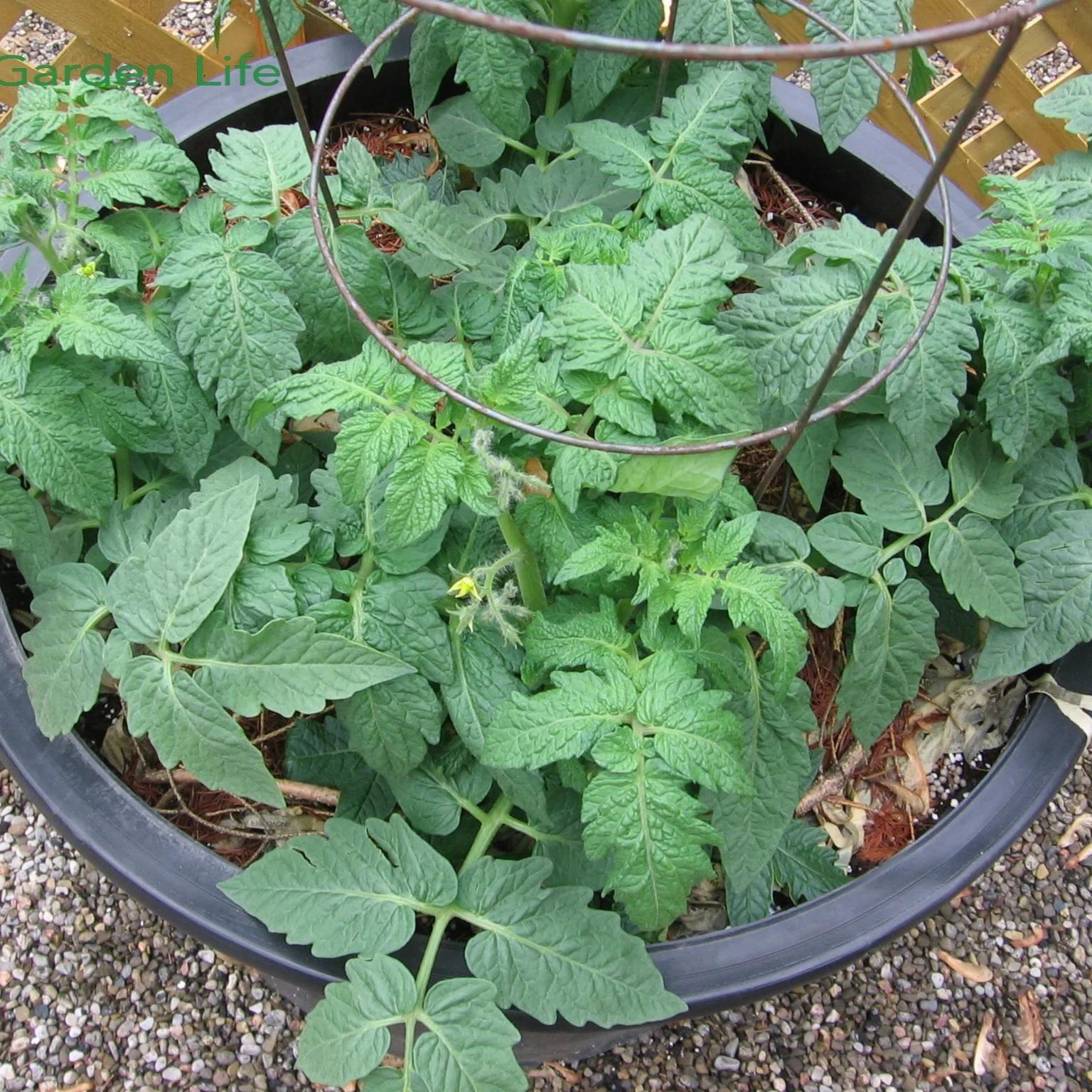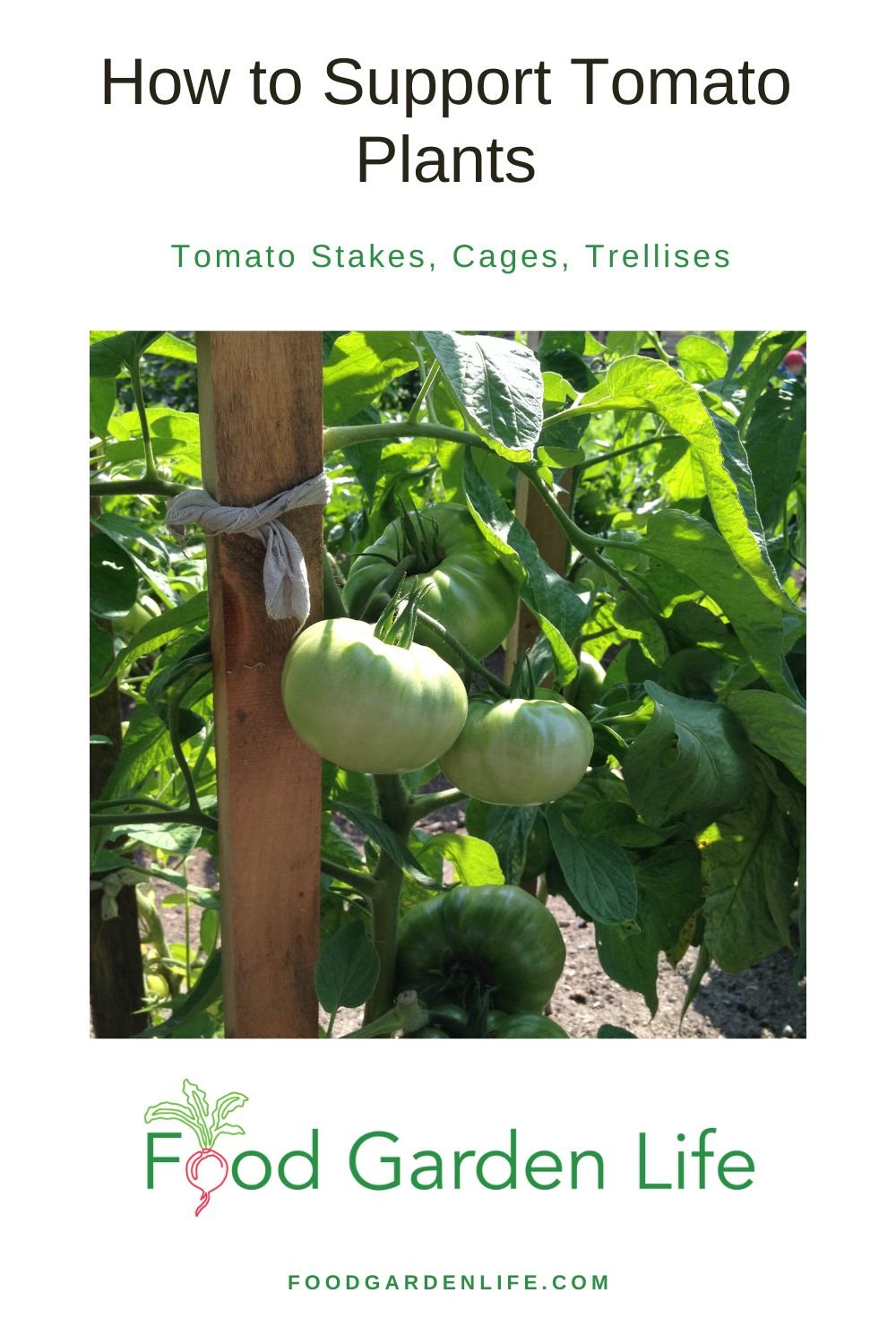Tomato Staking Guide: How to Support Tomato Plants
By Steven Biggs
Tomato Stakes, Cages, Trellises
Support tomato plants. Pick a method that suits your garden and your style of gardening.
Joe stakes his tomato plants.
I don’t.
My neighbour Joe’s backyard is all garden. Full-on tomato production. He fills it with row after row of tomato plants, neatly staked, pruned, and trained.
My garden is maxed out on tomatoes too. But my tomato patch looks entirely different from Joe’s.
I grow some tomato plants in cages. The tomato plants on my driveway (where I can’t hammer in a stake) are supported by a trio of stakes in a teepee formation.
In another area, I grow tomatoes up twine.
Joe and I both grow our tomato plants in ways that suit our garden layout and approach to gardening.
This guide to staking and supporting tomato plants will help you pick a method that fits your garden.
To Stake or not to Stake
When tomato plants are staked or supported, the fruit isn’t touching the soil.
The easiest way to grow tomato plants is to simply let them sprawl on the ground.
This is how tomatoes are often grown on a field scale. Take a road trip to a tomato-growing region such as Leamington, Ontario, and you’ll see fields with tomato plants sprawling on the ground.
There are reasons for home gardeners to support tomato plants:
When tomato plants are staked or supported, the fruit isn’t touching the soil, meaning clean tomatoes, and less chance of rot and insect damage
Upright plants take up less space…so if you stake tomatoes, you can fit more plants into your garden
An upright tomato plant has more air circulation around the leaves—and that reduced the chance of disease
In my garden we have a high-density approach to growing tomatoes because my daughter grows over 100 varieties in our urban yard. We grow them much more densely than many gardeners, but it works well because we support and prune the plants.
Tomato Support Depends on Plant Type
The type of tomato plant you grow affects the need for staking and pruning.
“Dwarf” tomato plants are quite compact and usually don’t need any pruning or support. Great for container gardeners!
“Bush” tomato plants (also called “determinate” tomato plants) get to a certain height and then don’t get any taller. The harvest window is shorter. Great if you want a concentrated harvest for sauce-making or processing. Stake or cage determinate tomato plants to increase planting density and to keep tomatoes off the ground.
“Indeterminate” tomato plants keep getting taller and taller all summer long. Great if you want an ongoing harvest. This is the sort of tomato plant often grown in commercial tomato greenhouses. Prune and support indeterminate tomato plants to optimize production—and know that they can get very tall by the end of the summer.
Tomato Staking and Support Ideas
There are lots of ways you can stake and support tomato plants. Pick one that suits your garden and the amount of time you want to spend tending your tomato crop.
Here are ideas for supporting your tomato plants:
Staked tomato plants with wooden tomato stakes.
Tomato Stakes
Tie your tomato plant to a stake. A lot of gardeners keep one main stem, pinching off side shoots (called suckers). See ideas for tomato stakes below.
Tomato Cages
Grow the tomato inside a supportive cage-like frame. Plants in cages can be wider—so having more than one main stem is common. See below for a tip on making your own tomato cages.
Grow Tomato Plants up Twine
Visit a commercial tomato greenhouse and you’re likely to see tomato plants growing up a piece of twine suspended from above.
We use a variation of this twine method in our garden, where we make tall A-frames with bamboo, and run a horizontal pole between them—six feet up in the air. Then we dangle pieces of twine from the horizontal pole, and train our tomato plants up the twine. This way we can space our tomatoes very closely together so that we can fit more tomato varieties into the garden.
We make tall A-frames with bamboo, and run a horizontal pole between them.
Then we dangle pieces of twine from the horizontal pole, and train our tomato plants up the twine.
Florida Weave for Tomatoes
The “Florida Weave,” where twine supported by two end stakes is woven around the tomato plants for support.
In this method of supporting tomato plants, we weave the tomato stems between horizontal rows of twine. Start by putting stakes at both ends of your tomato row. As plants get taller, keep adding rows of twine, and weave the stems between them.
Grow a Tomato Arch
If you have an archway in your garden, use it for tomato plants.
Indeterminate tomato varieties get taller, and taller, and taller. As they reach the top of the arch, you can train them down the other side.
Tomato-Staking Tip
Don’t get hung up on supporting tomatoes the “right way.”
There are many ways to do it—and you just need to pick one that suits the way you want to garden and the type of tomato plants you’re growing.
Make Your Own Tomato Cages
Make a tomato arch with cattle panel wire.
A lot of the so-called tomato cages sold at garden centres are just too small to be useful. And if you find larger cages, they can cost you an arm and a leg.
We make our own tomato cages from the sheets of wire mesh used to reinforce concrete.
Cut the 4’ x 8’ sheet into two 4’ x 4’ sections (bolt cutters work well)
Then, bend the mesh into a cage
The bending takes effort as this is a strong material (I find that it works best if I place a board over the line I want to bend along, and then stand on the board as I bend the wire upwards)
These homemade tomato cages are long-lasting. Our oldest ones are over 15 years old and going strong.
If you’re creative, you might come up with other materials to make your own tomato cages. I’ve seen old bundle buggies used!
Be creative! A bundle buggy as a tomato cage.
My daughter Emma and I made our own tomato cages by cutting and bending wire mesh.
Tomato Stake Ideas
Bamboo stakes are an option for staking—but be sure to get large enough stakes as smaller ones might be too flimsy.
I’m not a fan of the flimsy plastic-coated stakes sold at garden centres.
There are lots of other things you can use to stake tomato plants. Here are ideas:
Iron rebar
Iron t-bars
Lumber (1x2 and 2x2 stakes are common)
Bamboo
Metal pipe
Bamboo and wood rot over time. But they widely available and relatively inexpensive.
My favourite Tomato Stake
My favourite tomato stake is iron rebar. Here’s why:
It’s long lasting
It’s thin, making it easier to push into the ground by hand (iron t-bars last a long time too…but need hammering into the ground)
As it oxidizes, it becomes brown and blends into the surroundings (compared to the hideous brightly coloured stakes I sometimes see for sale)
Create Your Own Unique Edible Landscape
That fits for your yard, and your style!
Best Twine for Training Tomato Plants
If you opt to grow tomato plants up twine, keep in mind that by the end of the season, a tomato-laden plant weighs a lot. We’ve used natural-fibre twines such as just and sisal some years—but they aren’t always up to the task for the whole season.
If you can find it, get a tomato twine. Such a thing exists; it’s what’s used in commercial tomato greenhouse operations.
How to Stake Tomato Plants in Straw-Bale Gardens
The tomatoes in this driveway straw-bale garden are supported with bamboo tripods.
If the concept of straw-bale gardening is new to you, read this article.
Straw bales break down as the summer progresses. That’s what we want. But the result is that what seems like a firmly anchored stake in the spring will move (unless you drive the stake deep enough that it goes right through the bale and into the underlying soil.)
In our driveway straw-bale garden, we make tripods out of lumber or bamboo, tied together at the top. If the base is spaced out and balanced, they support tomato plants all summer.
How to Support Tomatoes in Containers
Determinate tomato plants in containers will probably need some sort of support, such as the cage shown here.
If you’re growing dwarf tomato plants, they likely won’t need support.
But if you’re growing determinate tomato plants, you’ll probably want to support them. I find that cages work well.
Note: When growing in containers, the shorter the better. That’s because if the plants and stakes are too tall, there’s a chance of the container tipping over in the wind.
The Great Tomato Debate
In our book No Guff Vegetable Gardening, my co-author Donna and I made up the following table to help gardeners think about a tomato support method that works in their garden.
Tomato Support FAQ
How often should I prune and train my tomato plants?
Ideally you don’t want to let suckers get too big before pruning them out…it’s a waste of energy that would be better spent growing tomatoes! In the summer when they’re actively growing, check them once a week. (But don’t sweat it if you miss a week.)
What should I do when the tomato plant gets taller than the stake?
Pin this post!
Find a taller stake, or bend over the top of the plant and allow some stems to grow from down below.
Should I leave one stem or more than one stem?
It’s up to you. But here’s what I do: For tomatoes on twine, I leave only one stem. In a cage, I allow 3 or 4 to grow because the plant has more space.
What should I use to tie the tomato plant to the stake?
I use a natural-fibre twine such as sisal or jute because at the end of the season I can compost it or let it fall to the soil where it decomposes.
Here are more ideas for tying tomato plants to stakes:
Dad used to cut up black garbage bags into strips because it made a soft tie that didn’t damage the tomato stem
My neighbour Sally used strips of old panty hose as tomato ties
You can buy purpose-made ties…but don’t waste your money
Will the tomato cage tip over when the plant gets big?
Can do. I drive one stake into the ground and secure a corner of the cage to it. That prevents any tipping as the plants get bigger.
More on Tomatoes
Check Out These Tomato Guides
Hear Experts Share Tomato Tips
More on Edible Gardening
7 Vegetable Garden Layout Ideas To Grow More Food In Less Space

